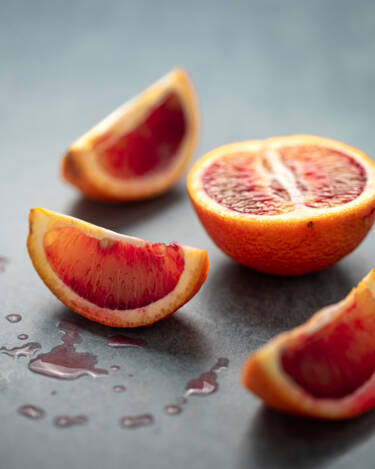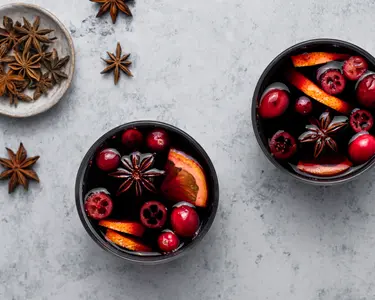9 macro food photography styles and how to achieve them

To elevate your food macro photography, experiment with lighting, aperture and composition, says food photographer and stylist Anna Janecka
There’s an irresistible fascination with capturing food. As a food and product photographer, food stylist and cook, my style is characterised by simplicity and elegance with a natural aesthetic. From in-store billboards for Cypressa, to being published in food magazines Ocado Life, Delicious and 91 Magazine, during my four-and-half year professional career I’ve worked with many brands in various food sectors. Here, I’m sharing nine styles to spice up your food macro photography.
Key elements to know before your start
Before you begin, you should answer a few questions:
- What makes your subject captivating?
- What hues attract your attention?
- In which light does your subject’s beauty shine best?
- Where is the texture and which specific details do you aim to highlight?
When photographing herbs, for instance, note that the backs of leaves show finer details compared to the front. Focusing on the texture of ingredients such as grains or spices can showcase their complex details, adding depth.
The checklist
When I photograph food, I keep a few important elements in mind:
- Due to the proximity of the subject, I often use apertures of f/15 or higher to maintain overall focus within the frame.
- Since high aperture reduces the light intake, I position myself as close to the light source as possible to compensate for the reduced exposure.
- I prevent camera shake and ensure accuracy in focus plane by using a tripod (I personally work with a Manfrotto 190 for straight-on photos and a C-stand for flat lays) and taking pictures tethered for optimal sharpness in my shots.


1. Natural and artificial light
To explore fresh perspectives and reveal greater texture and colour detail, consider experimenting with light sources and angles to enhance the depth and dimension in your images. Use different camera positions and moods to capture the beauty of food with stunning clarity and vibrancy.
Whether you aim to create a bright and airy look, a moody photo, soft or hard shadows, a straight-on or flat lay composition, you can always achieve your desired effect with either natural light or artificial light. I prefer working with artificial light (the Godox SL-60W and Godox AD300 Pro flash are my preferred set-up) because I have better control over it than natural light.
2. Side light
Side light, where the light source is positioned to the side of the subject, creates distinct shadows and highlights. To set up side light, position your light source to the side of your food subject, angling it slightly. Adjust the intensity and modify the light using diffusers or reflectors, as needed. Test and adjust until you achieve the desired look, ensuring shadows and highlights complement the composition of your photo. Whether using natural or artificial light, aim for a set-up that highlights textures.


3. Dappled light
Dappled light is small patches of light filtered through objects, creating patterns and shadows. It often brings a natural and organic feel as in the above photographs. It’s essential to find the right balance between light and shadow and ensure the food remains the focal point while the dappled light adds a touch of artistry. In the photos above, the leaf creates a dappled light effect. You can also see the behind the scenes set-up.
4. Backlight
Backlighting involves positioning the light source behind the subject, illuminating the food from the back. Imagine the face of a clock. Your camera should be placed at a 45-degree angle at 6 o’clock, with the light at 12 o’clock. This creates a soft, glowing effect around the edges of the food, highlighting its shape and outline. Backlighting can also produce a translucent effect, especially for drinks, adding a sense of freshness.

Flat lay composition. D750 + AF-S NIKKOR 50mm f/1.8G, 50mm, 1/40 sec, f/5.6, ISO 125, ©Anna Janecka
5. Flat lay
A flat lay arranges small subjects in a cohesive manner from a top-down view. This approach showcases intricate details and highlights multiple elements in an organised fashion, making it ideal for arranging food items.
A well-composed scene will be more engaging. What type of composition grid or approach you use does not matter – all that matters is that it’s done well. You can try a few different compositions when photographing.
The rule of thirds is a composition basic, and it works by dividing your frame into nine equal rectangles, using two vertical, and two horizontal lines that are equally spaced. Ideally, you want to place your subject on one of the thirds of the image, on one of the four points where the lines cross each other.
The golden triangle is another powerful composition. Draw an imaginary diagonal line across your frame from one corner of the frame to the opposite corner, and then draw two lines from the other corners to the first diagonal line, meeting it at right angles. Your points of interest should be where the lines meet.
I like to compose with a rule of odds when I shoot a group of objects (building a scene with an odd number of elements) and negative space, where an empty area in the frame highlights the hero and brings attention to the food details. This technique is the best for minimalistic composition.
Taking pictures from a straight angle offers a straightforward and direct portrayal, focusing solely on the subject’s details without any added visual complexity. This approach is particularly effective for highlighting specific features or textures of the food, resulting in a clean and minimalist aesthetic.


6. Bright and airy
Opting for a bright and airy aesthetic creates a sense of freshness and openness, with soft lighting and vibrant colours enhancing the overall appeal of the dish, as in the two photographs above. This approach is ideal for capturing cheerful and inviting images that evoke a positive mood. To achieve a bright and airy feel, use soft, diffused lighting and light backgrounds and incorporate props and compositions that evoke a sense of lightness. Try high-key lighting techniques and avoid harsh shadows. High-key lighting uses multiple light sources or diffused light to evenly illuminate the subject, creating a soft, clean look with minimal contrast.


7. Dark and moody
To infuse the images with drama and depth (like above), utilise deep shadows and rich contrasts to convey a sense of mystery and sophistication. Low-key lighting technique employs minimal light to create deep shadows and high contrast, emphasising specific areas while keeping the rest in darkness. Choose dark backgrounds and props to further enhance the effect.
8. Use bokeh for ethereal images
Bokeh adds a dreamy and ethereal quality to the images, with out-of-focus areas rendered as soft, blurred orbs of light. This effect draws attention to the subject in sharp focus as in the image above to the right. For best results, set your aperture as large as possible, get close to your subject and ensure there is some distance between the subject and the background.
Your background should have some texture. In the image above, the light is reflecting off the trees in a garden. Small gaps, such as those in the spaces between trees, will add additional effect.
Top tip: Invest in a ‘nifty fifty’ such as the NIKKOR Z MC 50mm f/2.8 or AF-S NIKKOR 50mm f/1.8 G for DSLR users. With a minimum focal distance of 0.16m (0.53 ft), the NIKKOR Z MC 50mm f/2.8 is a fantastic mixture of a versatile ‘nifty-fifty’ and a macro lens and offers perfect close-ups with 1:1 life size reproduction bokeh ratio.

Wide depth of field. D750 + AF-S NIKKOR 105mm f/2.8 VR, 105mm, 1/20 sec, f/7.1, ISO 100, ©Anna Janecka
9. Wide depth of field
Depth of field is primarily affected by aperture, focal length and distance from the subject.
A wide depth of field ensures the entire scene remains in sharp focus, allowing for maximum clarity and detail throughout. This approach is particularly useful for capturing intricate textures and details of the food, resulting in crisp and well-defined images.
Now, how to choose? Experiment and mark out your own style, as each approach offers its own unique visual impact, allowing for creative expression and experimentation to achieve the desired aesthetic and storytelling effect.
Opening image: D750 + AF-S NIKKOR 105mm f/2.8 VR, 105mm, 1/15 sec, f/6.3, ISO 125, ©Anna Janecka
Get started with macro
Featured products
More in food photography
7 composition grids to try for better food photography
Styling for food photography — a beginner's guide

Unlock greater creativity











